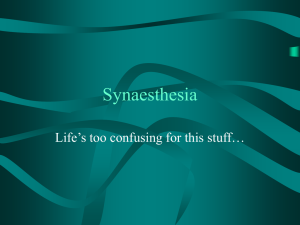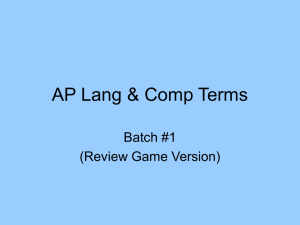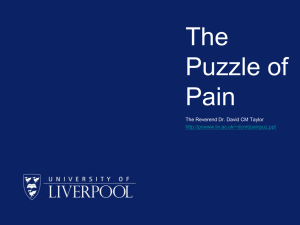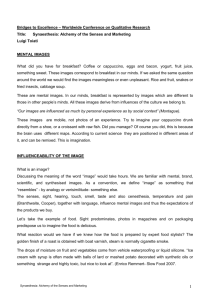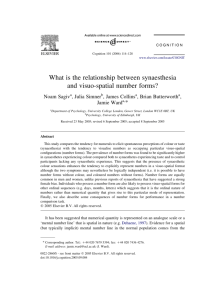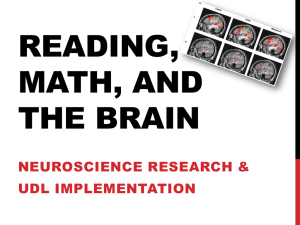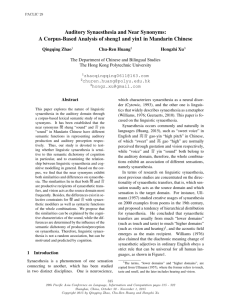Incident of synaesthesia, and diagnostic implications, in a
advertisement
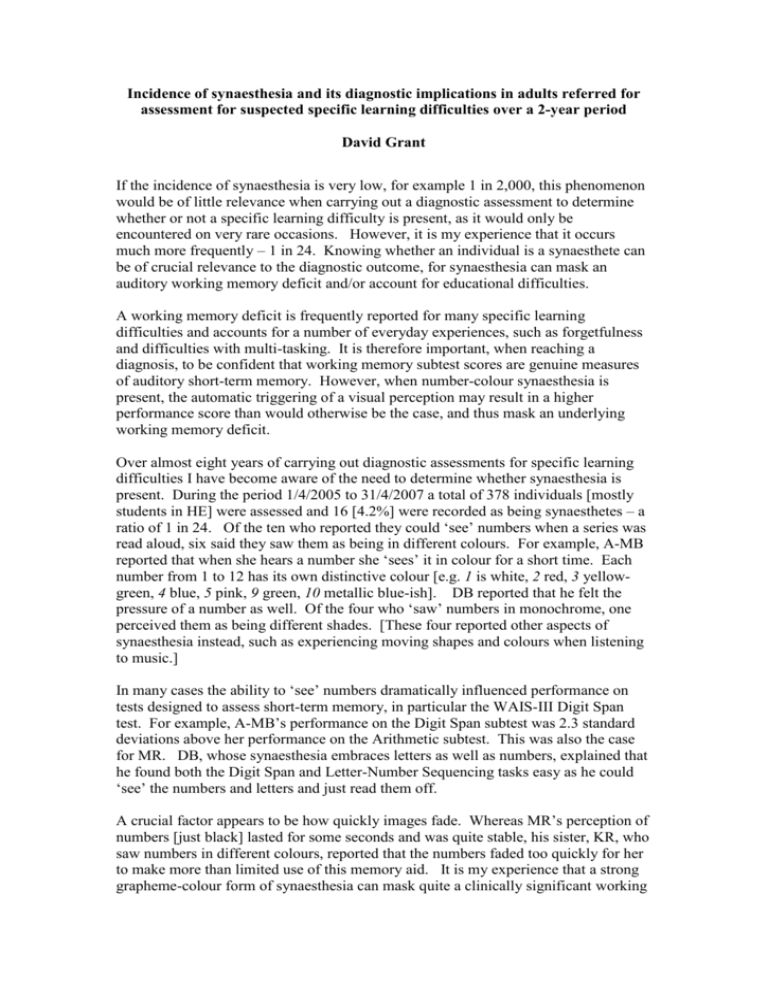
Incidence of synaesthesia and its diagnostic implications in adults referred for assessment for suspected specific learning difficulties over a 2-year period David Grant If the incidence of synaesthesia is very low, for example 1 in 2,000, this phenomenon would be of little relevance when carrying out a diagnostic assessment to determine whether or not a specific learning difficulty is present, as it would only be encountered on very rare occasions. However, it is my experience that it occurs much more frequently – 1 in 24. Knowing whether an individual is a synaesthete can be of crucial relevance to the diagnostic outcome, for synaesthesia can mask an auditory working memory deficit and/or account for educational difficulties. A working memory deficit is frequently reported for many specific learning difficulties and accounts for a number of everyday experiences, such as forgetfulness and difficulties with multi-tasking. It is therefore important, when reaching a diagnosis, to be confident that working memory subtest scores are genuine measures of auditory short-term memory. However, when number-colour synaesthesia is present, the automatic triggering of a visual perception may result in a higher performance score than would otherwise be the case, and thus mask an underlying working memory deficit. Over almost eight years of carrying out diagnostic assessments for specific learning difficulties I have become aware of the need to determine whether synaesthesia is present. During the period 1/4/2005 to 31/4/2007 a total of 378 individuals [mostly students in HE] were assessed and 16 [4.2%] were recorded as being synaesthetes – a ratio of 1 in 24. Of the ten who reported they could ‘see’ numbers when a series was read aloud, six said they saw them as being in different colours. For example, A-MB reported that when she hears a number she ‘sees’ it in colour for a short time. Each number from 1 to 12 has its own distinctive colour [e.g. 1 is white, 2 red, 3 yellowgreen, 4 blue, 5 pink, 9 green, 10 metallic blue-ish]. DB reported that he felt the pressure of a number as well. Of the four who ‘saw’ numbers in monochrome, one perceived them as being different shades. [These four reported other aspects of synaesthesia instead, such as experiencing moving shapes and colours when listening to music.] In many cases the ability to ‘see’ numbers dramatically influenced performance on tests designed to assess short-term memory, in particular the WAIS-III Digit Span test. For example, A-MB’s performance on the Digit Span subtest was 2.3 standard deviations above her performance on the Arithmetic subtest. This was also the case for MR. DB, whose synaesthesia embraces letters as well as numbers, explained that he found both the Digit Span and Letter-Number Sequencing tasks easy as he could ‘see’ the numbers and letters and just read them off. A crucial factor appears to be how quickly images fade. Whereas MR’s perception of numbers [just black] lasted for some seconds and was quite stable, his sister, KR, who saw numbers in different colours, reported that the numbers faded too quickly for her to make more than limited use of this memory aid. It is my experience that a strong grapheme-colour form of synaesthesia can mask quite a clinically significant working memory deficit. It is not safe to conclude simply that synaesthetes have a superior memory [Rich & Mattingley, 2002]. Rather, it is important to be more precise about what form of memory is being referred to and how it is being measured. For at least two subjects their synaesthesia was severe enough to interfere with academic performance. For example, LC ‘saw’ each word as an individual image when talking, listening and reading, resulting in sensory overload. As there is a lack of evidence about whether there may be an association between specific learning differences and synaesthesia, an analysis was undertaken by diagnostic outcome and sex for the 16 synaesthetes. [See Table 1]. Dyslexia 0 Dyspraxia ADD/ADHD 1 3 CF DB, AB, FB Other 2 Males n=6 Females n = 10 4 2 1 LC, PB, DG, HG LR, GK A-MB MK dysgraphia; MR working memory deficit 3 LP dyslexia & dyspraxia; KR processing speed deficit; NP no sld Table 1 Categorisation of synaesthetes by diagnostic outcome and sex The main diagnostic outcomes were as follows: dyslexia, 43.6%; dyspraxia, 17%, dyslexia and dyspraxia, 9%, ADD/ADHD, 4.2%. Synaesthesia was reported by 2.4% of dyslexics, 4.8% of dyspraxics, and 25% of those with ADD/ADHD. As ADD/ADHD can be conceptualised as a form of sensory overload, the 25% incidence figure, intuitively, is not a major surprise. However, the sample figures are currently far too small to do more than form the basis of hypotheses. The series was composed of slightly more females [52%] than males [48%]. 1 in 22 females were found to be synaesthete, and 1 in 30 males, a ratio of 1:1.36. An analysis by degree subject was also undertaken, for there are reports [see Rich & Mattingley, 2002] that synaesthesia is associated with being creative and artistic. 38% of synaesthetes were enrolled on a science-based course, 25% on a humanitiestype course, 19% on an arts-based course, and the other 19% on either a medical or business course. The incidence of synaesthesia reported here is almost identical to that reported by Simner et al [2006] for a HE student population, while the female/male ratio is reasonably close to their figure as well. With the possible exception of ADD/ADHD, it appears the incidence of synaesthesia is not associated with dyslexia or dyspraxia. However, given the frequency with which synaesthesia occurs, it is clear that any diagnostic assessment for a specific learning difficulty should, as a matter of course, consider the possibility that synaesthesia may also be present. References Rich, NA & Mattingley, JB. 2002 Anomalous perception in synaesthesia: A cognitive neuroscience perspective. Nature Reviews: Neuroscience 3, 43-52 Simner, J., Mulvenna, C., Sagiv, N., Tsakanikos, E., Witherby, S.A., Fraser, C., Scott, K. & Ward, J. 2006 Synaesthesia: The prevalence of atypical cross-modal experiences. Perception, 35, 1023 - 1033
